- HOME
- ABOUT US
- SOLUTIONS
- Metal Roof PV Mounts and Systems
- Flat Roof Solar Panel Mounting Systems Solutions
- Tile Roof Solar Mounting Systems Solutions
- Solar Tracking Solutions for Commercial PV Projects
- Ground Solar Mounting Systems Solutions
- Floating Solar Solutions - PV Systems
- PV Solar Carport Mounting Systems Solutions
- Balcony Solar Panel Mounting Systems Solutions
- PRODUCTS
- PROJECTS
- COMPANY NEWS
- BLOG
- Contact Us
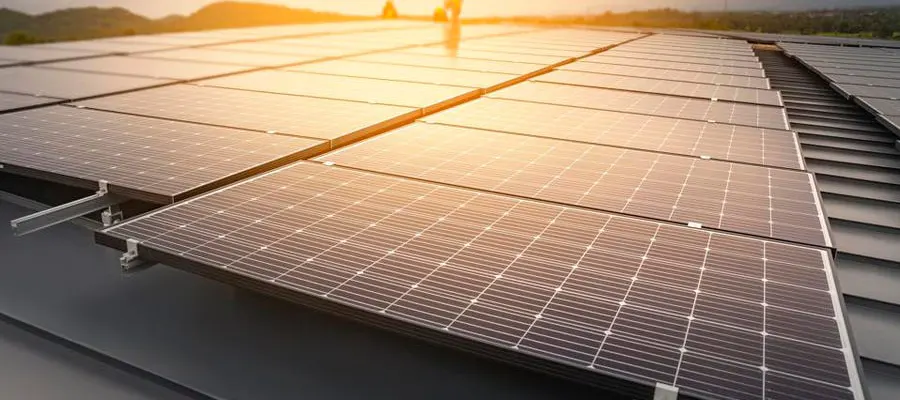
Image source: Getty
Solar technology has advanced by leaps and bounds in recent years, with increased solar cell efficiency, power output, and overall quality. Solar panels now have conversion efficiencies of more than 20% on average, compared to less than 15% previously. Many businesses spend a lot of money on commercial solar panels. But some people aren't doing enough to keep their solar panels working well over time. It costs the company money because their panels don't produce as much electricity as they could.
So, once you've decided to install a solar panel system, you can improve its efficiency in a variety of ways. In short, it is possible to take steps to maintain or increase the output of your solar modules. This blog will provide you with a basic understanding of what efficiency is and six methods for getting the most out of your solar system.
What Is Solar Panel Efficiency?
It is the proportion of sunlight captured by a solar panel that is transformed into electricity that is known as the PV cell's conversion efficiency. The majority of the light that strikes the panels reflects. Only a small portion is converted into electricity, which can power your appliances. The amount of sunlight that your solar panels can convert into usable energy is referred to as solar efficiency.
Temperature, orientation, shade, and cell type are all factors that influence efficiency. Because silicon cells have a maximum efficiency rate of 22%, panels can convert 22% of the sun's energy into electricity during peak production.
How Efficient Are Solar Panels?
The conversion of sunlight into usable energy by solar panels has increased significantly in recent years, from an average of about 15% to about 20%. High-efficiency solar panels can achieve up to 23% efficiency. A standard-sized panel's power rating has also increased from 250W to 370W. Solar panel efficiency is determined by photovoltaic cell efficiency (cell type and design) as well as total panel efficiency based on cell type, layout, and size. The manufacturer's efficiency rating, which is based on standard test conditions and provides a reliable indication of performance, is an easy way to gauge the efficiency of solar panels. The more efficient a solar panel is, the more energy it will generate compared to a less efficient panel, and the fewer panels you will require.
The Major Types of Solar Panels
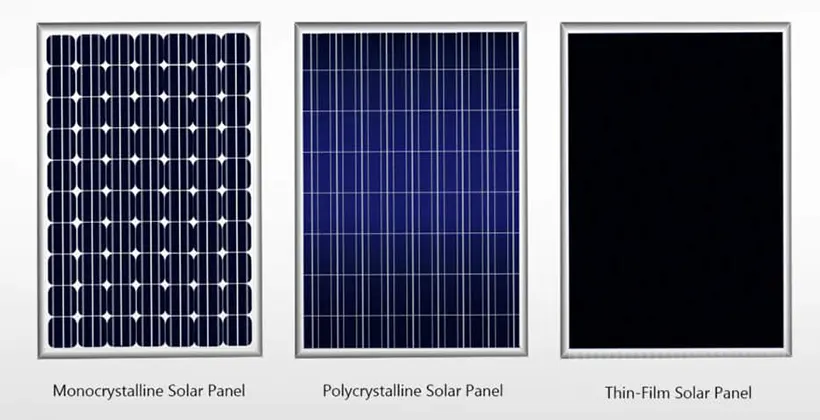
The three most common types of solar panels used in commercial or residential installations are monocrystalline, polycrystalline, and thin-film.
Solar Panel Monocrystalline
Monocrystalline solar cells are the most efficient and can be used in both residential and commercial applications. They are made from a single crystal of silicon, which is more efficient than panels made from multiple silicon fragments melted together. Because of the way that they are constructed, they take up significantly less room. They can be costly, however, and are not always the best option for solar customers who prioritize cost.
Polycrystalline Solar Panel
Polycrystalline solar cells, as opposed to monocrystalline cells, are made by melting together multiple silicon crystals. They are less expensive, but they are less efficient and take up more space than monocrystalline silicon solar cells.
Thin-film Solar Panel
Thin film solar panels are the least efficient type of solar panel because they are lightweight, flexible, and inexpensive. Their versatility, however, makes them an excellent choice for non-rooftop applications such as RVs and smaller appliances.
Factors That Affect Solar Panel Efficiency
The following are some of the primary elements that impact solar panel efficiency:
Panel Design
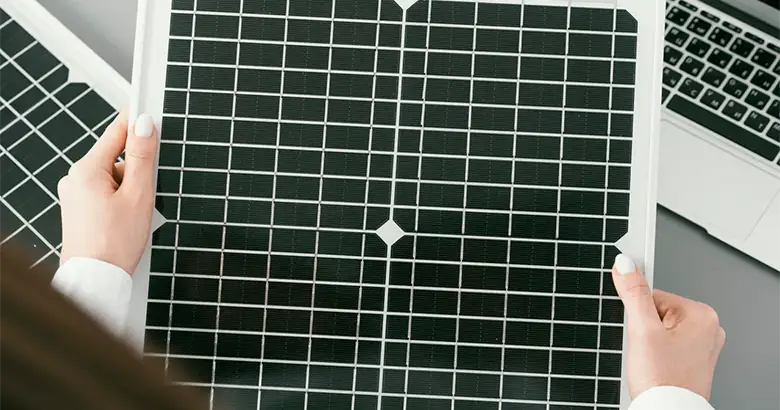
The layout and arrangement of the cells along the panel is the primary design factor influencing solar panel efficiency. The color of the backsheet used to protect the panels can also have an impact on efficiency. While black may appear more appealing as a protective backsheet, the color absorbs more heat. This causes higher temperatures and, as a result, a decrease in total conversion efficiency, so other colors, such as dark blue, green, or even patterns, may be a better choice for your solar panels.
Solar Panel Materials
Monocrystalline solar cells are made from a single silicon source. This makes them more pure, thereby making them more effective and more expensive. With efficiencies ranging from 15 % to 22.8 %, monocrystalline silicon panels are the most efficient solar panels available.
Polycrystalline solar cells are made of silicon that has been blended from multiple sources, giving them their distinctive blue color. This causes imperfections on the panel's surface, limiting efficiency to around 13-16%. Polycrystalline panels, on the other hand, are less wasteful and less expensive.
Solar Panel Inclination
Solar panel orientation, also known as solar panel angle or tilt, is critical for reaping the full benefits of the sun's radiation. Panels that are flat to the ground will not perform as well as those that are angled toward the sun. The optimal tilt is determined by the latitude of your home or facility as well as the time of year. However, most situations do not allow for panel tilt to be adjusted each season. Instead, they can be installed at various angles to accommodate different seasons and roof pitches.
Temperature
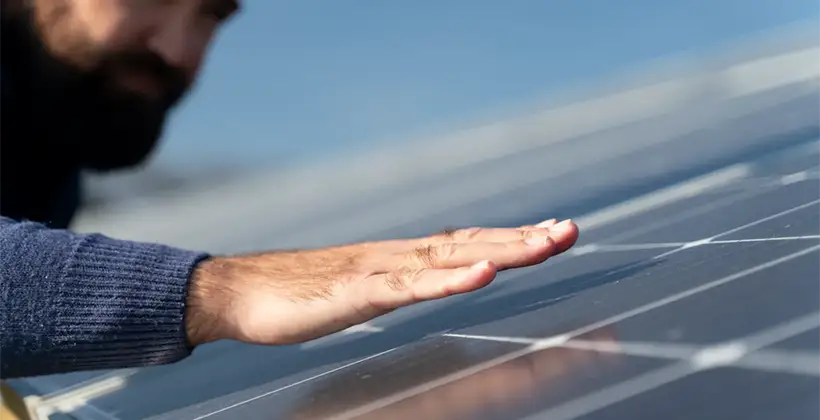
Solar panels perform best at temperatures around 77°F, with peak efficiency between 59°F and 95°F. However, if the surface temperature of your solar panels rises above 149°F, solar panel efficiency may suffer.
Weather Conditions That Are Extreme
Anything that comes between the sun and your solar panels reduces the amount of solar energy produced by your system. As a result, extreme weather conditions such as snow, wind, rain, and hail can potentially reduce the efficiency of your solar panels.
Dust and Grime Build Up
The elements will undoubtedly cause dust and grime to accumulate on your solar panels over time. If your solar panels have a layer of dust and grime on them, the sun will not be able to reach them effectively, resulting in a drop in efficiency until the panels are cleaned.
Ways to Raise Solar Panel Efficiency
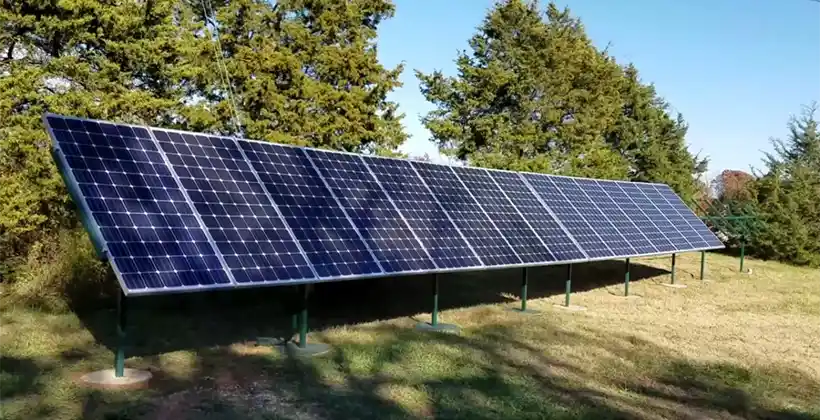
Choose Your Panel Wisely
When it comes to solar panels, the choices you make can have an impact on their efficiency. Monocrystalline solar panels are the most efficient and also the most expensive of the three main types.
The efficiency and cost of polycrystalline solar panels are in the middle, and they were some of the first to be made available to the general public. They are lighter than monocrystalline cells and generate less waste when manufactured, resulting in a lower environmental impact.
Thin film solar cells are the least efficient but also the most affordable of the three types. They are also the ones with the most future potential, as there is constant research and development going on to improve this technology. It's also versatile, and while it takes up significantly more space than the other forms, it's also the lightest.
Choose Trustworthy Installers
When solar modules are installed correctly, they absorb the greatest amount of solar radiation. The panels produce more electricity in this manner. When installing, orientation and angle are two important factors to consider. Solar modules typically receive the most sunlight when positioned at an angle of 18-36 degrees. Solar panels should be installed on a slope that faces south if you live in the northern hemisphere. In the southern hemisphere, solar panels should be installed on a north-facing slope. The primary goal is to maximize solar exposure.
Though somewhat ironic, it is worth noting that temperature levels affect the efficiency of solar panels. The effectiveness of solar modules may be reduced as the temperature rises. There should be enough space between the roof and the panels to allow airflow and prevent the system from overheating. Furthermore, if there are structural issues in your roof, they will be able to detect, point them out, and recommend solutions. All of that takes skills and knowledge, and an expert knows how to do it best.
Avoid Shadows
Because solar panels generate electricity from sunlight, it stands to reason that shade reduces electricity output. Many people, however, are unaware of the impact of shade on a series of solar panels.
Even if only one photovoltaic cell is shaded, the energy generated by its neighboring cells can be affected. This is due to the fact that it functions as a resistor.
Tall trees and other structures are the two most common culprits when it comes to shading solar panels. Spend time during the planning process analyzing a site to ensure that shade will not be an issue.
Clean Your Solar Panels
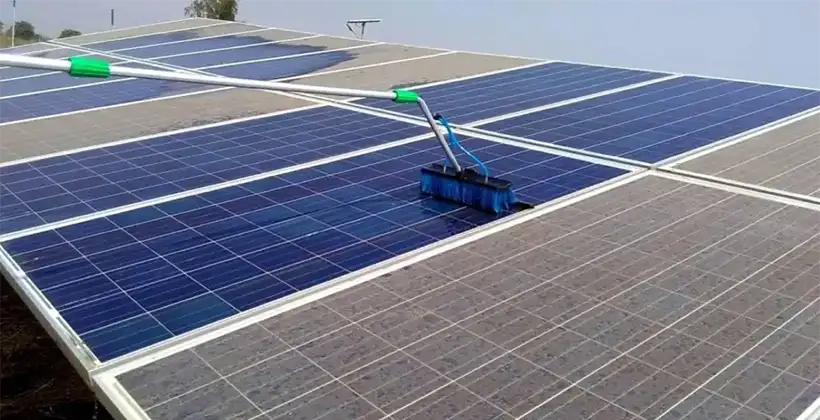
Solar panels require very little maintenance because they have no moving parts. However, it is best to clean your solar panels on a regular basis because dust and dirt can accumulate on the surface and reduce efficiency.
The frequency with which you should clean your solar panels is determined by several factors, including how frequently it rains and how much it costs to have them cleaned.
Dust and dirt may only cause a 5% decrease in output over the course of a year. However, if they become extremely dirty — for example, in a location that does not receive regular rainfall — the output drop can be greater than 20%. As a result, cleaning your solar panels once a year is a good idea.
Tracking the Sun
Tracking the sun allows your panels to absorb as much energy as possible. Solar trackers allow your panels to follow the sun and absorb the most rays if you have a ground-mounted solar array. These systems are most commonly found in commercial solar farms, but smaller trackers allow your panels to arc from east to west, following the sun from sunrise to sunset.
This can be an expensive system, but the increased efficiency may be worth the initial investment, especially if you live in an area with little direct sunlight.
Solar Concentrator
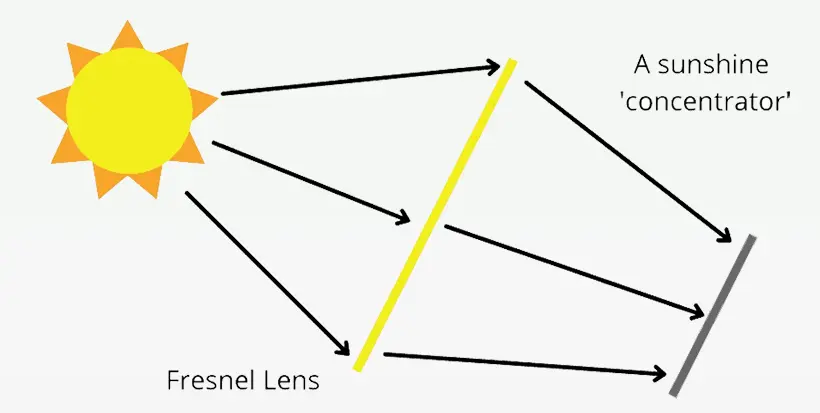
A solar concentrator can assist in concentrating the light absorbed by the sun. Its purpose is to focus light that falls on large areas into smaller ones, and large mirrors can help with this. As a result of this method, your solar panels will be more efficient, providing you with more energy and saving you even more money on your bills.
Do Solar Panels Lose Efficiency Over Time?
Solar panels gradually degrade over time, resulting in less electricity produced from the same amount of sunlight. Weather-related degradation is one cause of solar panels' declining efficiency. Solar panels have a 30-year average productive life. Solar panels and their output degrade at a rate of about 0.5% per year, according to the National Renewable Energy Laboratory (NREL): a 20-year-old panel will produce approximately 90% of the electricity it produced in its first year of life.
Conclusion
As a way to save money and help the environment, more businesses than ever are investing in commercial solar panels. However, if solar panels are not properly installed, maintained, and monitored, you will most likely not achieve maximum efficiency in terms of electricity output.
These six tips should help you increase the efficiency of your solar panels and maintain optimal performance, saving you money and reducing your business's environmental impact.

